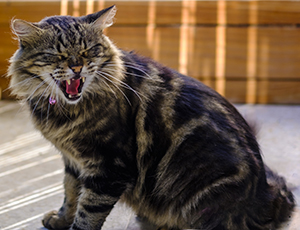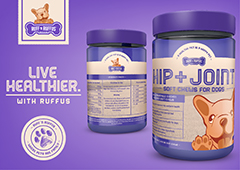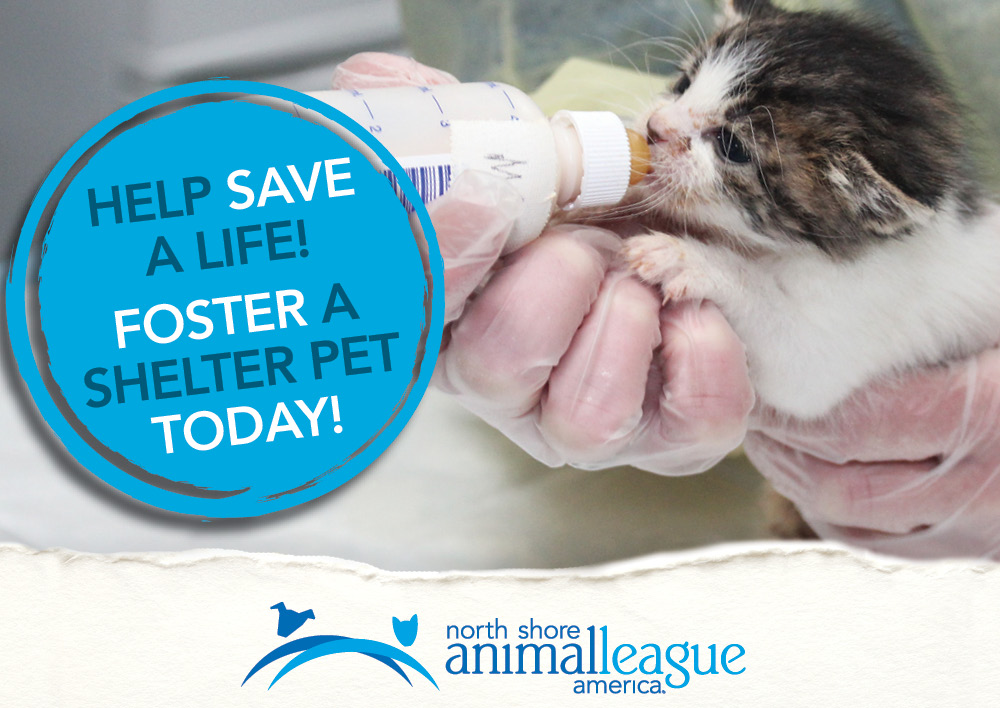The 411 on Pet Dental Health

If your dog’s breath is bad it could be a sign of something more serious. Don’t overlook your four legged BFF’s dental health. See your vet.
By Crystal C. Long
Attention all pet paw-rents! Do you take care of your pooch’s or feline’s pearly whites? It’s easy to overlook the importance of pet dental health so we’re here to help you keep a watchful eye on your furry best friend’s teeth. We’re sharing all sorts of goodies, tips and tricks for keeping Fido’s or Fluffy’s set of teeth as clean as can be. Check in with your local vet for helpful tips any month of the year.
 Fluffy here is showing some pearly whites. It’s not a struggle to keep them that way - lots of healthy options are easy to find.
Fluffy here is showing some pearly whites. It’s not a struggle to keep them that way - lots of healthy options are easy to find.We humans knows the importance of having good dental health, so why would it be any different for our pets? According to the AVMA, 80% of dogs and 70 % of cats will develop some form of oral disease by the age of three. With this frightening statistic in mind, it is crucial that you keep your beloved furry friend’s pearly whites healthy – don’t be afraid to cross those t’s and dot those i’s when it comes to dental care of your pet, a moment’s hassle will guarantee you a happy and healthy pet in the long run!
But how can you tell if your beloved pet is affected by dental issues? Pet Lifestyles Magazine is giving you the 411 on all things pet dental, Sharing a viable 360 on this angle of pet care, we sat down with New York City-based veterinarian Dr. Brett Shorenstein, the medical director and owner of Abingdon Square Veterinary Clinic; and Los Angeles-based veterinarian Dr. Weinberg, the founder of 911 VETS, the first in-home pet medical service in California.
An USDA-accredited veterinarian, Dr. Shorenstein is well-versed in the area of dental health for pets. “Periodontal disease, tooth fracture, gingivitis, and oral tumors.” He told Pet Lifestyles Magazine about some of the common issues in canine dental health nowadays. “Periodontal disease includes gingivitis (inflammation of the gums) and loss of bone/soft tissue around the teeth. This can lead to fistulas (holes) into the nasal cavity, weakening of the jaw (even fracture of the jaw bone), jaw bone infection which can also release bacteria into the bloodstream.” On the same subject, practicing veterinarian for over 33 years, Dr. Weinberg from 911 VETS comments, “Dental calculus builds up on the teeth causing gum recession, foul breath, periodontal gum disease, and secondary infection throughout the body.”

Scary as it might seem, this can be easily prevented by simply having a good oral care routine at home, “Daily brushing is the name of the game. It is the best way to prevent tartar. Brushing should be supplemented with dental chews/treats that are approved by the Veterinary Oral Health Council (VOHC) - a group of veterinary specific dentists that have approved certain products for the prevention of tartar.” Dr. Shorenstein stated, as Dr. Weinberg agrees, “It’s also important to get your dog used to teeth brushing at an early age, using flavored, enzymatic dog toothpaste. Brush daily or as much as possible.” He states, recommending that we can start caring for our pup’s teeth as early as the young age of eight to ten weeks, “start getting them used to brushing early. Make a game/ritual out of it.”
Be sure to look out for signs that indicate your furry friend might have a serious dental health issue, Dr. Shorenstein warns. These include: “bad breath, loss of appetite, dropping food out of the mouth, bleeding gums, blood on chew toys, and head shyness (ducking out of the way when a hand reaches towards them). A good preventive measure is to have bi-annual to annual visits to your veterinarian who will perform a comprehensive oral exam.”
Dr. Weinberg adds “calculus (yellow/brown bulky buildup on the teeth especially the ones you can see). Pull back the corner of the mouth and look!” Research studies have shown that serious canine dental health issues like periodontal disease is associated with microscopic changes in the kidneys, liver, as well as the heart. Both doctors highly stress the importance of brushing your pooch’s teeth daily and using the right products, “a VOHC approved tooth brush, dental chews and water additives are all recommended.
Brushing is daily maintenance but does not preclude yearly professional dental cleanings by your veterinarian.” Dr. Shorenstein suggested. Dr. Weinberg suggests similar, “a special pet toothbrush, or a special rubber finger thimble with bristles on it. Some can benefit by putting additives in the water but that should not be seen as an end-all be-all.”
 Say Bye Bye Dog Breath with this natural system for your pet’s pearly whites.
Say Bye Bye Dog Breath with this natural system for your pet’s pearly whites.©Maxwell Mason
Dental health care for pets has vastly improved throughout the ages, with new technologies and innovations being developed every day. One of the most significant technological developments is the application of full mouth oral x-rays during a dental procedure, this is a massive advancement in the canine dental care field as some dogs never show signs of pain or indicate when their teeth is unhealthy – often, x-rays are the only way for a veterinarian to tell if your dog has a dental issue and needs to be treated. If an injury or dental condition is left untreated, it could lead to some serious damage on your furry friend’s health, for example: a set of rotten and painful teeth due to bacteria damage and bone damage. Such bacteria can then spread to the heart, the bladder, and other organs causing serious systemic illnesses.
So remember – maintaining your pet’s dental health is just as important as, well, your own dental health. Dr. Shorenstein makes it easy for you to remember the safe practices of canine dental care with a quick list of dos and don’ts:
Allow your furry best friend to have bad teeth? It not only points to looking cosmetically unpleasing – what seems like a case of bad breath could be the first sign to a bigger problem. So the next time you catch a whiff of Fido’s or Fluffy’s breath, be sure to take a moment and pay some serious attention: their teeth may need more help than you think.













